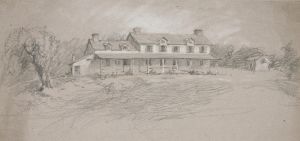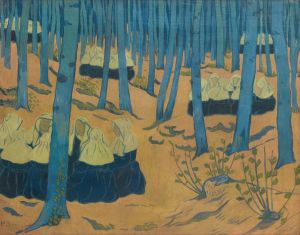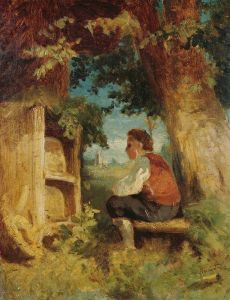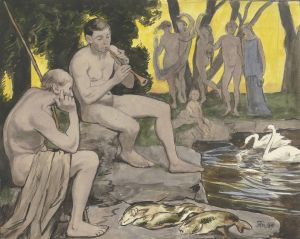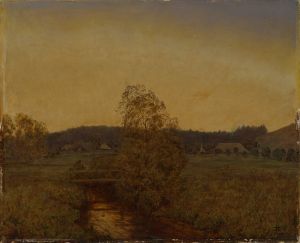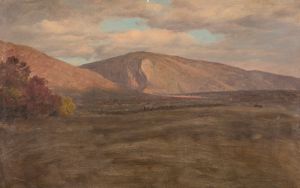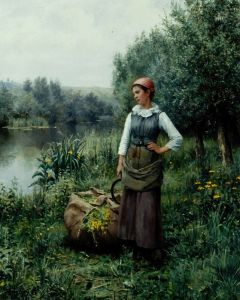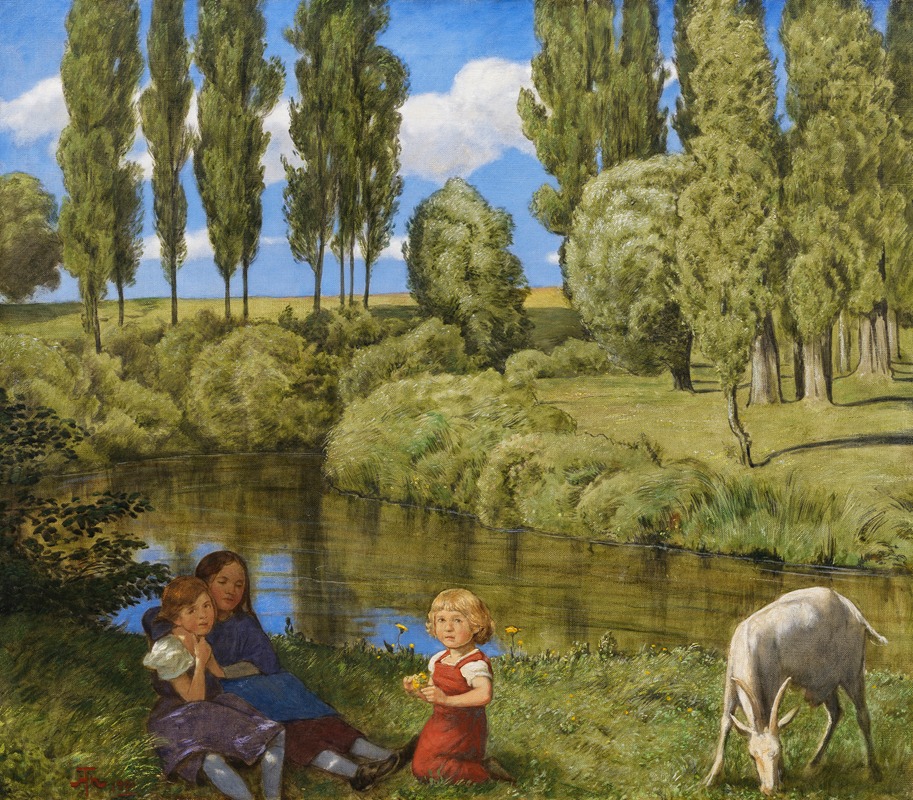
Am Stillen Bach
A hand-painted replica of Hans Thoma’s masterpiece Am Stillen Bach, meticulously crafted by professional artists to capture the true essence of the original. Each piece is created with museum-quality canvas and rare mineral pigments, carefully painted by experienced artists with delicate brushstrokes and rich, layered colors to perfectly recreate the texture of the original artwork. Unlike machine-printed reproductions, this hand-painted version brings the painting to life, infused with the artist’s emotions and skill in every stroke. Whether for personal collection or home decoration, it instantly elevates the artistic atmosphere of any space.
Hans Thoma's painting Am Stillen Bach (translated as "By the Quiet Brook") is a notable work by the German painter, who was active during the 19th and early 20th centuries. Thoma, born in 1839 in Bernau in the Black Forest region, is recognized for his landscapes, portraits, and genre scenes that often reflect his deep connection to nature and his native surroundings. His works frequently depict idyllic and serene rural settings, and Am Stillen Bach is no exception.
This painting exemplifies Thoma's characteristic style, which combines elements of Romanticism and Realism. It portrays a tranquil scene by a quiet brook, likely inspired by the landscapes of the Black Forest or similar pastoral environments. Thoma's attention to detail and his ability to capture the peacefulness of nature are evident in the composition. The painting features lush greenery, a gently flowing stream, and a harmonious interplay of light and shadow, creating a sense of calm and introspection.
Thoma's art often reflects his admiration for the simplicity and beauty of rural life, and Am Stillen Bach aligns with this theme. His works were influenced by the German Romantic tradition, as well as by artists such as Albrecht Dürer and the Dutch landscape painters of the 17th century. Thoma's ability to blend these influences with his personal vision made him a distinctive figure in German art.
The painting was created during a period when Thoma was gaining recognition for his work. By the late 19th century, he had established himself as a prominent artist in Germany, and his works were exhibited in major cities such as Munich and Berlin. Thoma's art resonated with audiences who appreciated his ability to evoke a sense of nostalgia and connection to nature.
Today, Am Stillen Bach is considered an example of Thoma's mastery in capturing the essence of the natural world. While specific details about the painting's current location or provenance are not widely documented, many of Thoma's works are housed in German museums, including the Hans Thoma Museum in Bernau and the Staatliche Kunsthalle Karlsruhe.
Hans Thoma passed away in 1924, leaving behind a legacy of art that continues to be celebrated for its beauty and emotional depth. Am Stillen Bach remains a testament to his skill as a painter and his enduring connection to the landscapes that inspired him.





